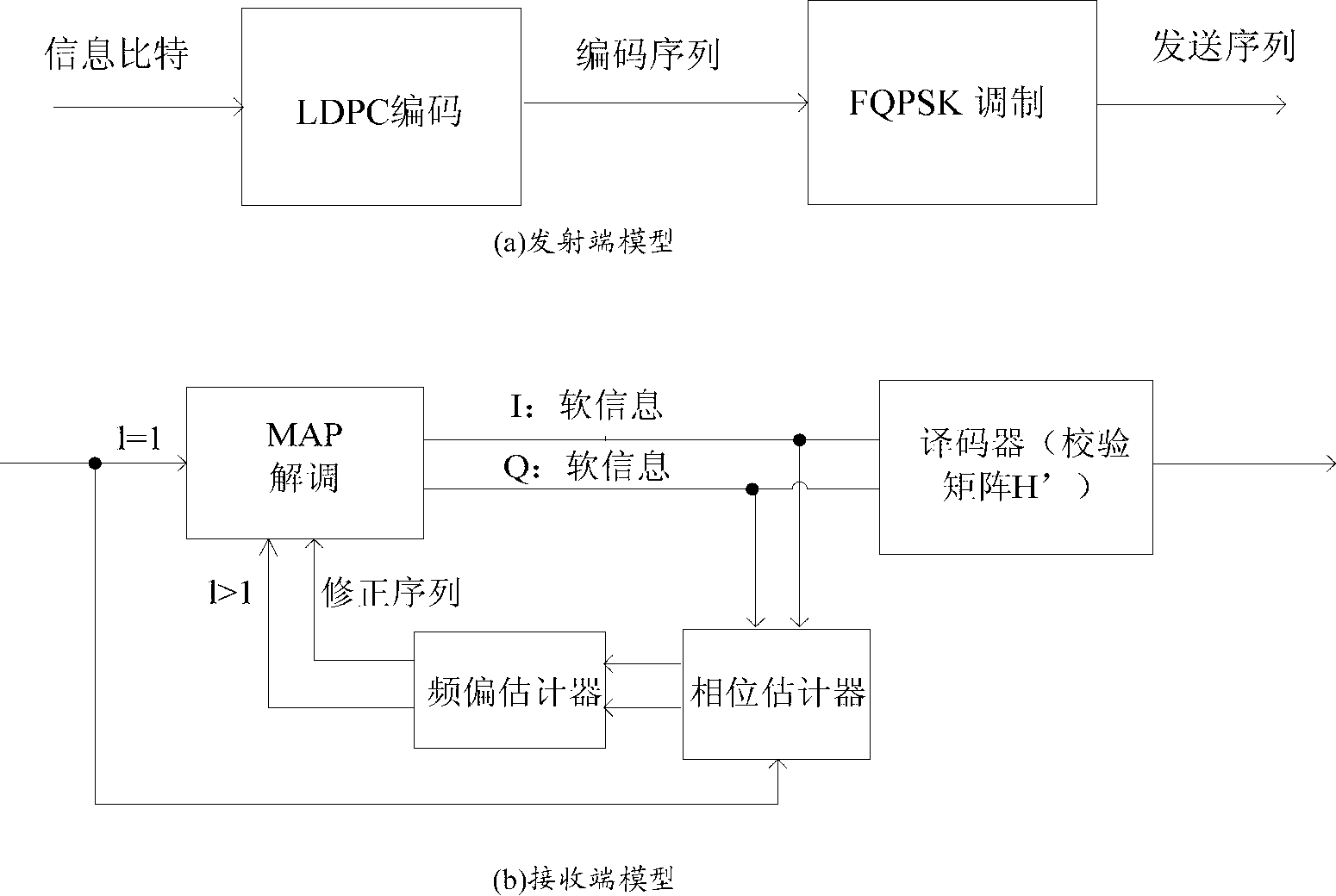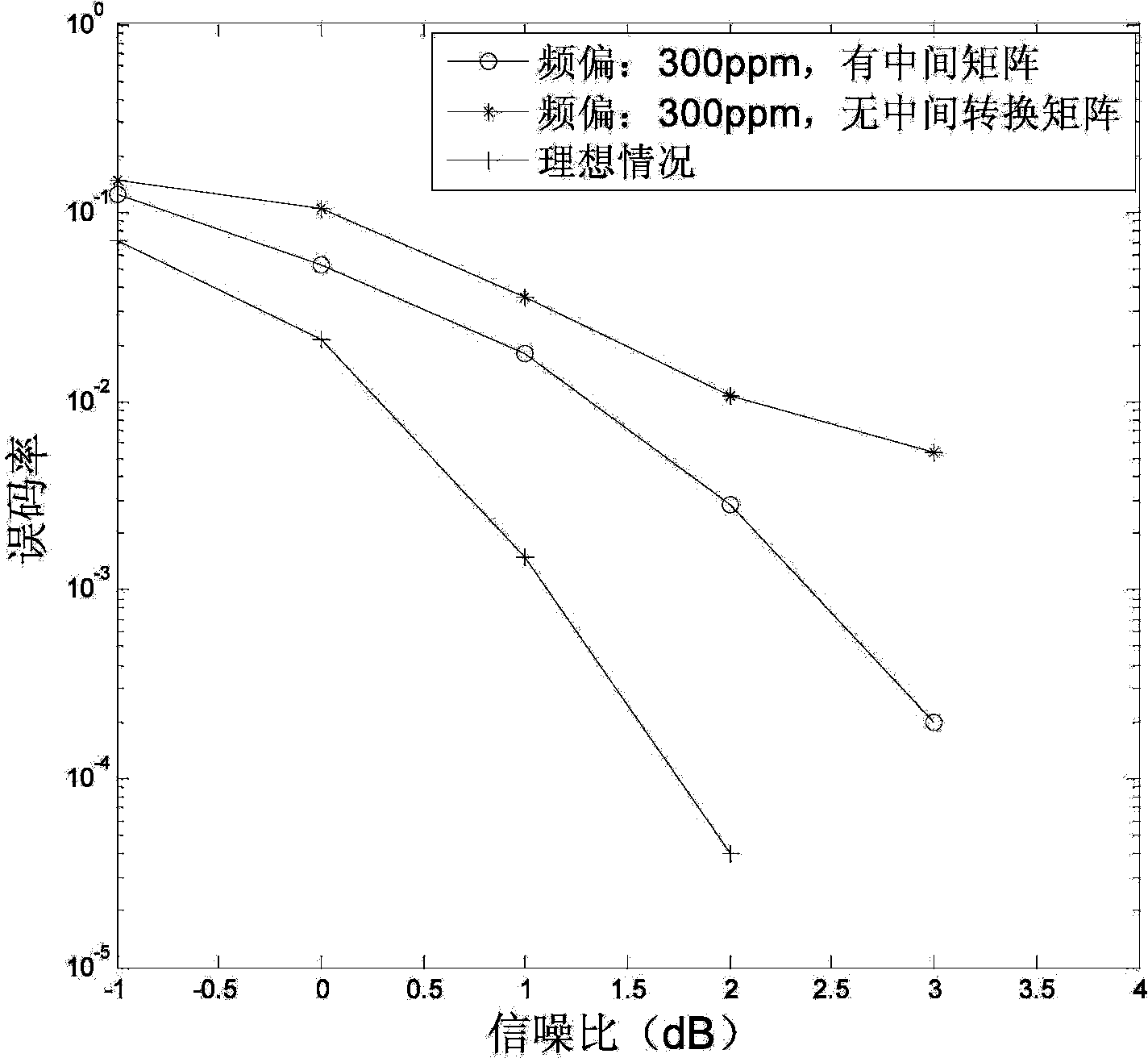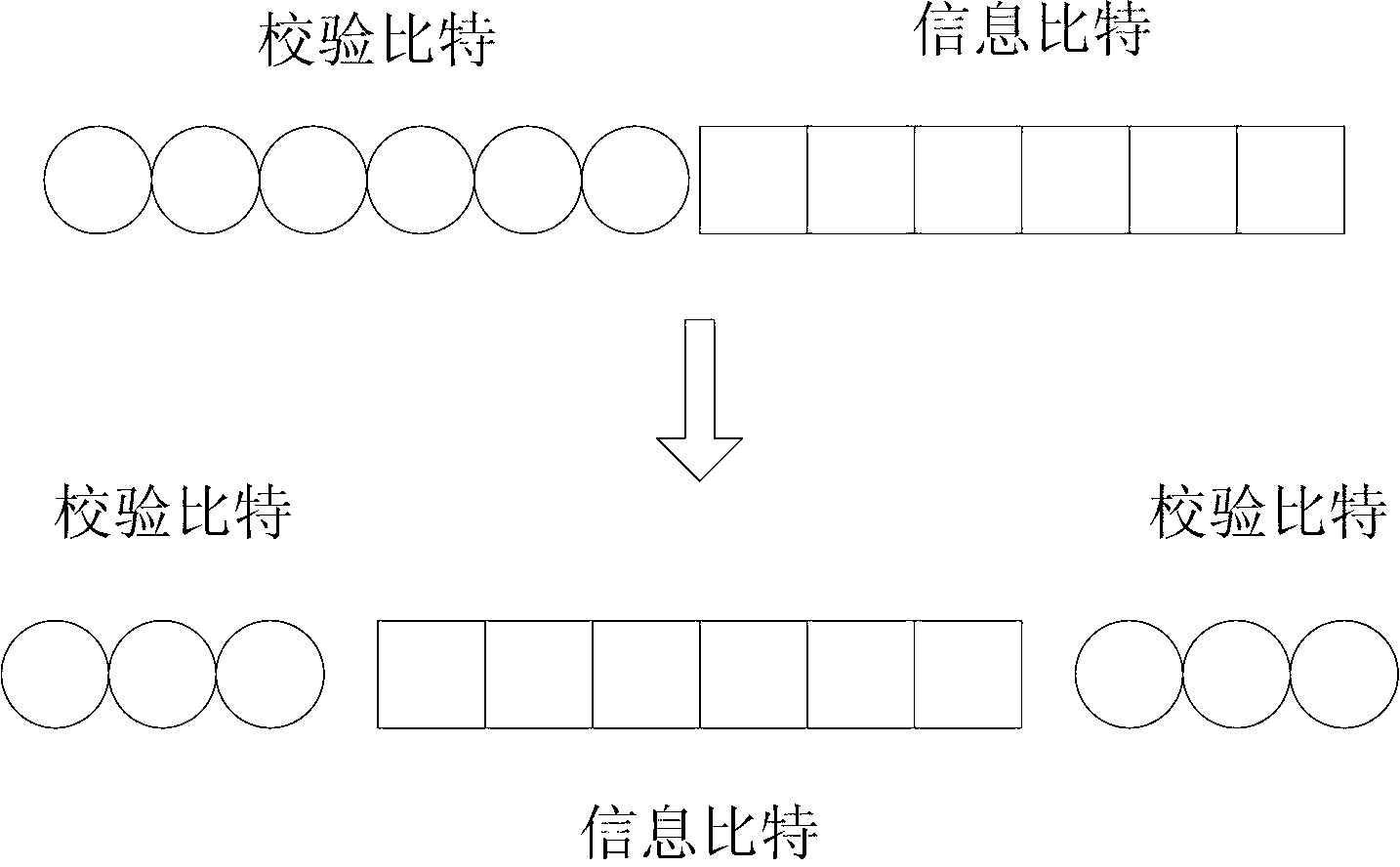Joint modulation coding method for deep-space link residual frequency offset
A residual frequency offset and joint modulation technology, applied in the field of joint modulation and coding, can solve problems such as limitation and enlarge antenna size, achieve the effect of assisting frequency offset compensation, increasing frequency offset resistance performance, and solving weak signal decoding
- Summary
- Abstract
- Description
- Claims
- Application Information
AI Technical Summary
Problems solved by technology
Method used
Image
Examples
Embodiment Construction
[0024] The present invention will be further described below in conjunction with the accompanying drawings and specific embodiments.
[0025] Please refer to Figure 1 to Figure 10 , the present invention provides a joint modulation and coding method for deep space link residual frequency offset and a cascade system of FQPSK and LDPC, in which non-data-assisted phase and frequency offset estimation are embedded in the iterative demodulation process algorithm. The demodulation of FQPSK is based on the modification of BCJR (Bahl-Cocke-Jelinek-Raviv) algorithm for maximum a posteriori probability detection symbol by symbol. In particular, the present invention restores the phase and frequency offset through the bit-by-bit soft information LAPPR (log a posteriori probability ratio) obtained from MAP demodulation in the iterative demodulation process, and then sends this soft information to the phase and frequency offset in the estimator. When the compensation accuracy is satisf...
PUM
 Login to View More
Login to View More Abstract
Description
Claims
Application Information
 Login to View More
Login to View More - R&D
- Intellectual Property
- Life Sciences
- Materials
- Tech Scout
- Unparalleled Data Quality
- Higher Quality Content
- 60% Fewer Hallucinations
Browse by: Latest US Patents, China's latest patents, Technical Efficacy Thesaurus, Application Domain, Technology Topic, Popular Technical Reports.
© 2025 PatSnap. All rights reserved.Legal|Privacy policy|Modern Slavery Act Transparency Statement|Sitemap|About US| Contact US: help@patsnap.com



